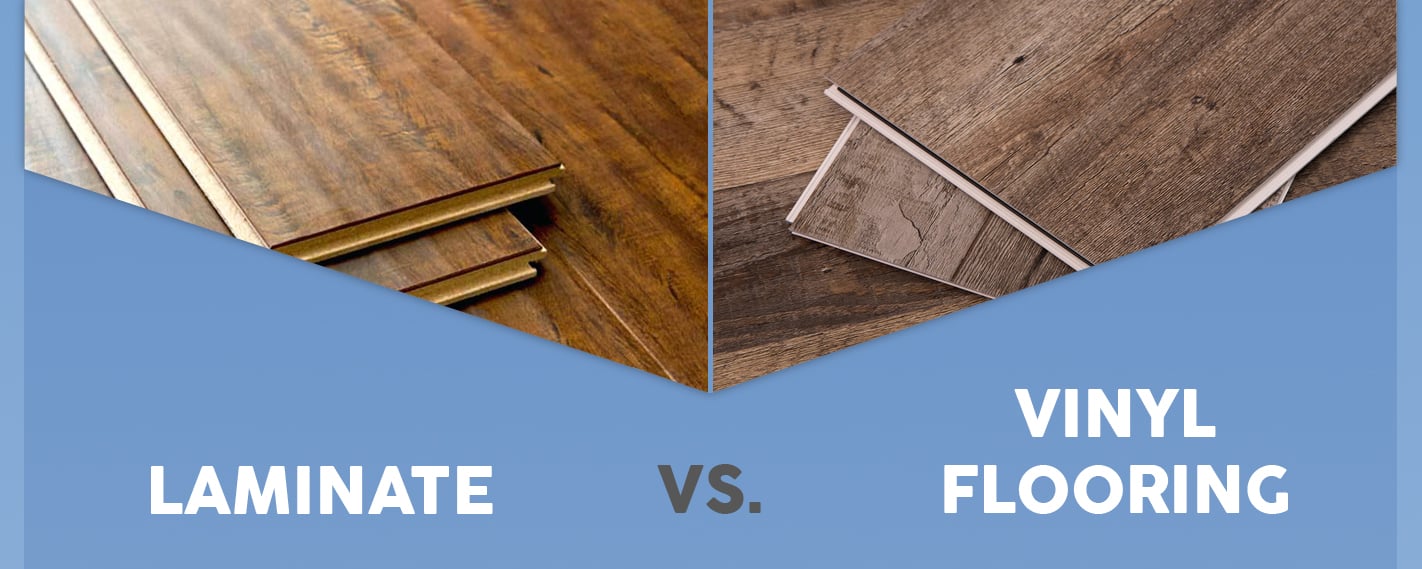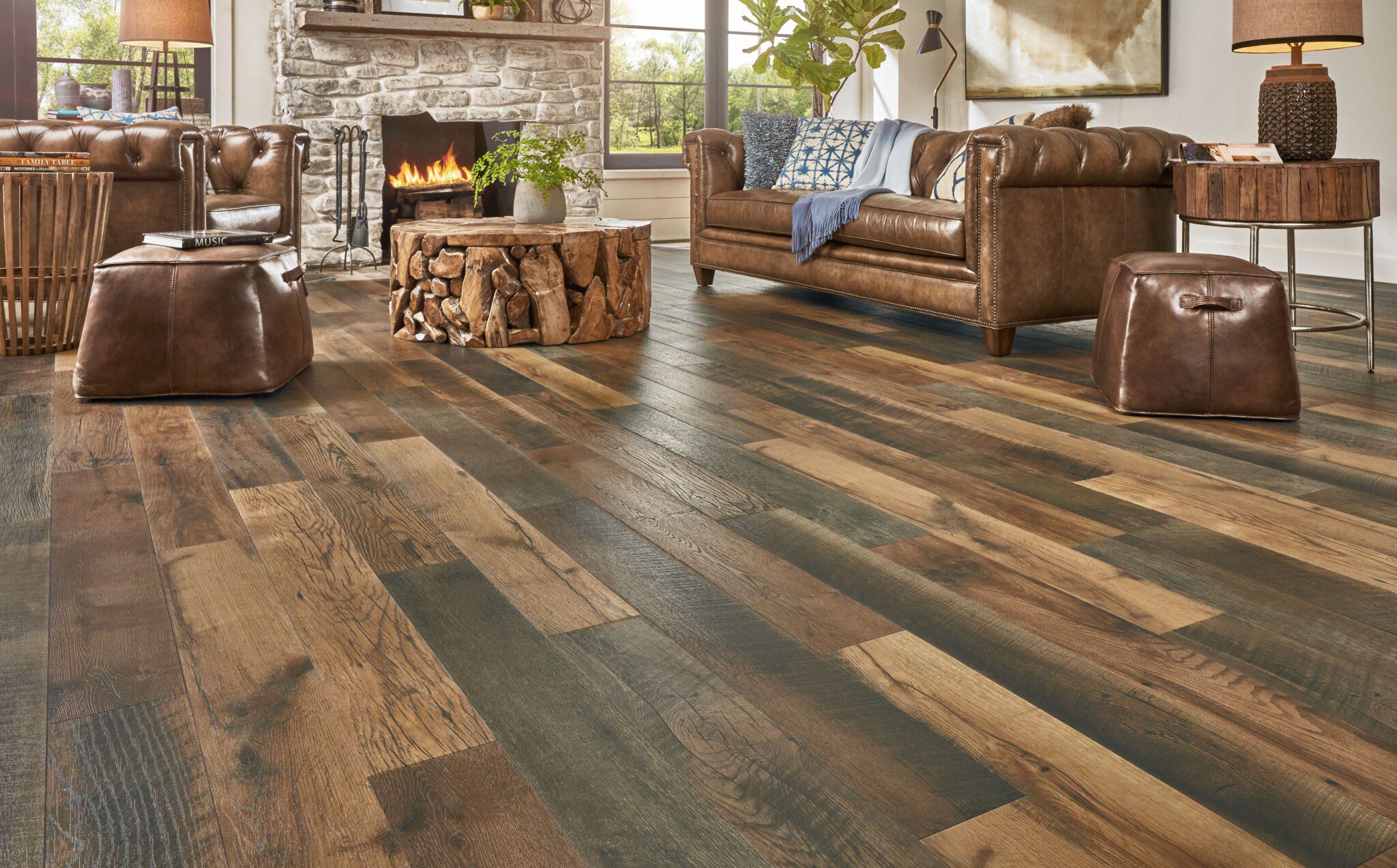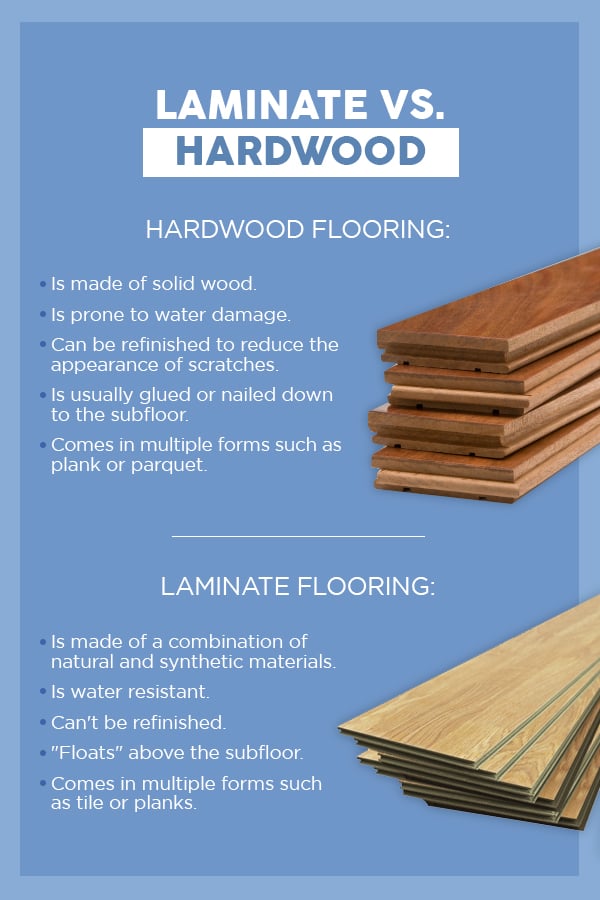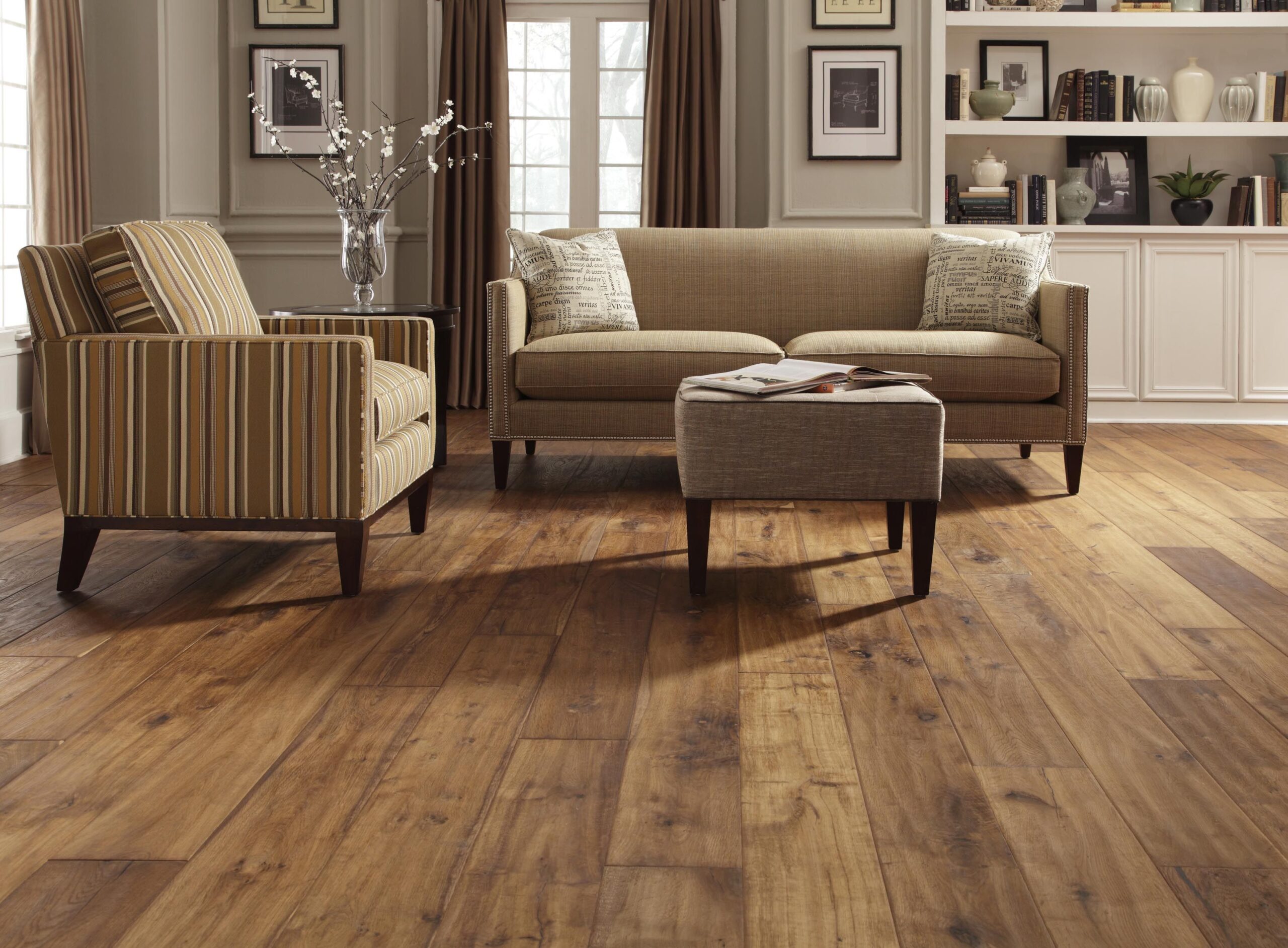Choosing the right flooring for your living room can be a daunting task. With so many options available, it can be overwhelming to make a decision that not only fits your budget but also meets your lifestyle needs. Two popular choices for living room flooring are laminate and vinyl. Both have their own set of advantages and disadvantages, but which one is the better choice for your living room? Let's take a closer look at the differences between laminate and vinyl flooring. Laminate vs Vinyl Flooring: Which is Better for Your Living Room?
Laminate flooring is a popular choice for many homeowners due to its affordability and versatility. It is made up of synthetic layers that mimic the look of real wood or stone. The top layer is a protective coating that makes it resistant to scratches, stains, and fading. This makes it a great option for high-traffic areas like the living room. However, it is not without its drawbacks. Laminate flooring can be loud and slippery, and it is not suitable for areas with high moisture levels. The Pros and Cons of Laminate Flooring in Living Rooms
Vinyl flooring is known for its durability and water-resistant properties, making it a popular choice for areas prone to spills and moisture, such as the living room. It is available in a wide range of styles and designs, including options that mimic the look of hardwood or tile. Vinyl flooring is also easy to maintain and budget-friendly. However, it can be prone to scratches and dents, and it may not have the same luxurious feel as other flooring options. Vinyl Flooring for Living Rooms: Advantages and Disadvantages
Both laminate and vinyl flooring are known for their durability, but they differ in their resistance to certain factors. Laminate flooring is more prone to scratching and damage from heavy furniture, while vinyl flooring is more susceptible to dents and divots from sharp objects. However, both options are suitable for high-traffic areas and can withstand daily wear and tear with proper care. Comparing the Durability of Laminate and Vinyl Flooring in Living Rooms
When it comes to cost, laminate flooring is generally the more affordable option. The materials and installation costs are often lower than vinyl flooring, making it a budget-friendly choice for many homeowners. However, keep in mind that the cost can vary depending on the quality and style of the flooring you choose. Cost Comparison: Laminate vs Vinyl Flooring for Living Rooms
Maintenance and cleaning are important factors to consider when choosing flooring for your living room. Laminate flooring requires minimal maintenance, with regular sweeping and occasional mopping to keep it clean. However, it is not recommended to use harsh chemicals or excessive water when cleaning laminate flooring. On the other hand, vinyl flooring is more water-resistant and can withstand more frequent cleanings with water and mild cleaning products. Maintenance and Cleaning: Laminate vs Vinyl Flooring in Living Rooms
Both laminate and vinyl flooring offer a wide range of design options to fit any living room aesthetic. Laminate flooring comes in various wood and stone finishes, giving you the look of real hardwood or tile without the high cost. Vinyl flooring also offers a variety of styles and patterns, including options that mimic the look of more expensive materials like marble or slate. Design Options for Laminate and Vinyl Flooring in Living Rooms
For environmentally conscious homeowners, it is essential to consider the environmental impact of the flooring you choose. Laminate flooring is made from synthetic materials, making it less eco-friendly than vinyl flooring, which is made from PVC. However, some vinyl flooring can contain harmful chemicals, so be sure to do your research and choose a more environmentally friendly option if possible. Environmental Impact: Laminate vs Vinyl Flooring in Living Rooms
When it comes to installation, laminate flooring is typically easier to install than vinyl flooring. Laminate flooring comes in interlocking planks that can be installed without the need for adhesives or nails. On the other hand, vinyl flooring often requires glue or adhesive to secure it to the subfloor. This can add to the installation time and cost. Installation Process: Laminate vs Vinyl Flooring in Living Rooms
If you have a busy household with kids and pets, choosing a flooring option that can withstand high traffic is crucial. Both laminate and vinyl flooring are durable and can handle daily wear and tear, making them suitable for high-traffic living rooms. However, vinyl flooring may have an edge over laminate in terms of water resistance and ease of cleaning, making it a better choice for households with young children or pets. In conclusion, both laminate and vinyl flooring have their own unique advantages and disadvantages. When deciding between the two for your living room, it ultimately comes down to personal preference and lifestyle needs. Consider factors like budget, durability, maintenance, and design options to make the best decision for your home. Whichever flooring you choose, make sure to properly maintain it to keep it looking its best for years to come. Which Flooring is Best for High-Traffic Living Rooms: Laminate or Vinyl?
Laminate Vs Vinyl Flooring In Living Room: Which is the Best Option for Your House Design?

Introduction
 Choosing the right flooring for your living room is crucial in creating a stylish and functional space. With so many options available, it can be overwhelming to decide which type of flooring is best for your home. Laminate and vinyl flooring are two popular choices for living rooms, but which one is the better option? In this article, we will compare laminate and vinyl flooring and help you determine which is the best choice for your house design.
Choosing the right flooring for your living room is crucial in creating a stylish and functional space. With so many options available, it can be overwhelming to decide which type of flooring is best for your home. Laminate and vinyl flooring are two popular choices for living rooms, but which one is the better option? In this article, we will compare laminate and vinyl flooring and help you determine which is the best choice for your house design.
Laminate Flooring
Vinyl Flooring
/vinyl-vs-laminate-flooring-1822800_0372-5de7d94ebd85420f98f8c45e5bf8f670.jpg) Vinyl flooring
is also a synthetic product that replicates the look of natural materials. It is made from multiple layers of PVC materials, with a printed design layer on top. Vinyl flooring comes in two types:
luxury vinyl tile (LVT)
and
luxury vinyl plank (LVP)
. LVT mimics the appearance of tile, while LVP replicates the look of wood. Vinyl flooring is known for its durability, water resistance, and low maintenance.
Vinyl flooring
is also a synthetic product that replicates the look of natural materials. It is made from multiple layers of PVC materials, with a printed design layer on top. Vinyl flooring comes in two types:
luxury vinyl tile (LVT)
and
luxury vinyl plank (LVP)
. LVT mimics the appearance of tile, while LVP replicates the look of wood. Vinyl flooring is known for its durability, water resistance, and low maintenance.
Appearance
 When it comes to the appearance, both laminate and vinyl flooring offer a wide range of design options. Laminate flooring can mimic the look of hardwood, stone, or tile, and it comes in a variety of colors and patterns. The photographic layer of laminate flooring gives it a realistic appearance. On the other hand, vinyl flooring also offers a variety of designs, including wood and stone looks. With advancements in technology, vinyl flooring can now closely replicate the appearance of natural materials.
When it comes to the appearance, both laminate and vinyl flooring offer a wide range of design options. Laminate flooring can mimic the look of hardwood, stone, or tile, and it comes in a variety of colors and patterns. The photographic layer of laminate flooring gives it a realistic appearance. On the other hand, vinyl flooring also offers a variety of designs, including wood and stone looks. With advancements in technology, vinyl flooring can now closely replicate the appearance of natural materials.
Durability
 Both laminate and vinyl flooring are known for their durability, but they have different strengths. Laminate flooring is more resistant to scratches and dents, making it a great option for high-traffic areas. However, it is not as water-resistant as vinyl flooring, so it may not be the best choice for areas prone to moisture. Vinyl flooring, on the other hand, is highly water-resistant, making it suitable for areas like the kitchen or bathroom. It is also more resistant to stains and easier to clean.
Both laminate and vinyl flooring are known for their durability, but they have different strengths. Laminate flooring is more resistant to scratches and dents, making it a great option for high-traffic areas. However, it is not as water-resistant as vinyl flooring, so it may not be the best choice for areas prone to moisture. Vinyl flooring, on the other hand, is highly water-resistant, making it suitable for areas like the kitchen or bathroom. It is also more resistant to stains and easier to clean.
Installation and Maintenance
 When it comes to installation, laminate flooring is the easier option. It can be installed as a
floating floor
, meaning it does not need to be glued or nailed down. This makes it a great DIY project for homeowners. On the other hand, vinyl flooring can be installed as a
peel-and-stick
or
click-and-lock
system, depending on the type of vinyl. While it may require more tools and expertise, it can still be a DIY project for some. In terms of maintenance, both laminate and vinyl flooring are relatively low maintenance, requiring regular sweeping and occasional mopping.
When it comes to installation, laminate flooring is the easier option. It can be installed as a
floating floor
, meaning it does not need to be glued or nailed down. This makes it a great DIY project for homeowners. On the other hand, vinyl flooring can be installed as a
peel-and-stick
or
click-and-lock
system, depending on the type of vinyl. While it may require more tools and expertise, it can still be a DIY project for some. In terms of maintenance, both laminate and vinyl flooring are relatively low maintenance, requiring regular sweeping and occasional mopping.
Conclusion
 In conclusion, both laminate and vinyl flooring are excellent options for your living room. They offer a wide range of design options and are known for their durability and easy maintenance. When deciding between the two, consider your specific needs and the functionality of the space. If you want a more affordable option with a realistic appearance, laminate flooring may be the best choice. If you prioritize water resistance and durability, vinyl flooring may be the better option. Whichever you choose, both laminate and vinyl flooring are sure to enhance the overall look and feel of your living room.
In conclusion, both laminate and vinyl flooring are excellent options for your living room. They offer a wide range of design options and are known for their durability and easy maintenance. When deciding between the two, consider your specific needs and the functionality of the space. If you want a more affordable option with a realistic appearance, laminate flooring may be the best choice. If you prioritize water resistance and durability, vinyl flooring may be the better option. Whichever you choose, both laminate and vinyl flooring are sure to enhance the overall look and feel of your living room.



:max_bytes(150000):strip_icc()/SPR_1822800-vinyl-vs-laminate-flooring-5ae8c7b3ba61770036738c2e.png)





























:max_bytes(150000):strip_icc()/vinyl-vs-laminate-flooring-1822800_0372-5de7d94ebd85420f98f8c45e5bf8f670.jpg)
:max_bytes(150000):strip_icc()/SPR_1822800-vinyl-vs-laminate-flooring-5ae8c7b3ba61770036738c2e.png)


/GettyImages-933302268-4793e6f1672f4a5a92d0d17906c45ce1.jpg)



:max_bytes(150000):strip_icc()/laminate-vs-hardwood-flooring-how-they-compare-1821870_FINAL-5bae84f24cedfd0026f4205d-f0eb410f3d13406cb5890209447251ba.png)





































/cloudfront-us-east-1.images.arcpublishing.com/gray/JLAH5KBGPJBQVKGIS6B4LKNRUI.jpg)




